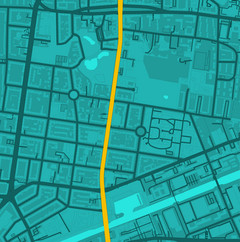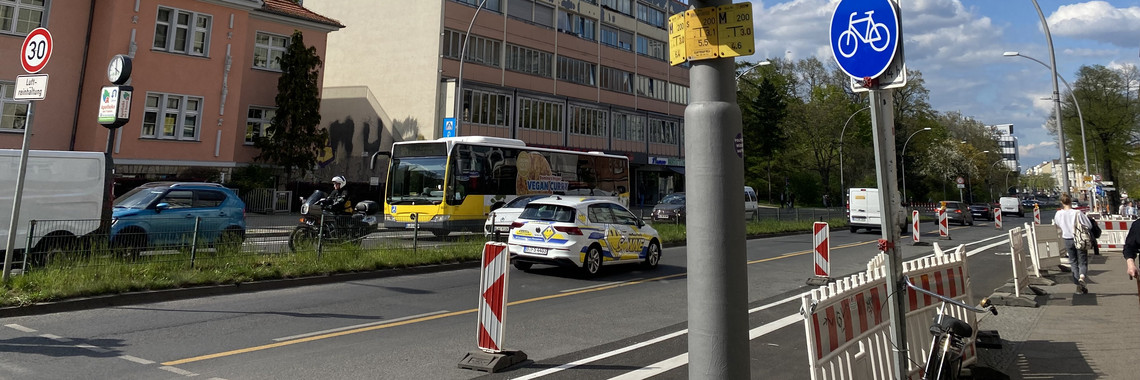Brief description of the study area

In April 2021, construction work began on the U6 underground line and a separate bus lane was needed for the rail replacement traffic. This was achieved by establishing a temporary cycle lane with clearance for bus traffic. In the area between Alt-Tempelhof and Alt-Mariendorf, all car parking spaces on the right-hand side of the road were removed. After completion of the construction work on the U6, the lane was preserved as a pure cycle lane.
Further information and a detailed description of the study area can be found in our report.
Results
The establishment of the pop-up cycle lane on Tempelhofer Damm has been accompanied by a reduction in the average volume of motor vehicle traffic of about 8 per cent. This corresponds to a reduction in the average traffic volume from just under 31,000 motor vehicles per day to just over 28,000 motor vehicles per day.
Between January 2019 and March 2021, the average volume of bicycle traffic on Tempelhofer Damm was 1,282 per day. From the establishment of the environmental lane in April 2021 until the end of the year, the number of cyclists has increased to 2,090 per day. This corresponds to an increase of 63 percent.
Following the introduction of the pop-up environmental lane, NO2 pollution has decreased by almost 5 µg/m³. Before its establishment, the NO2 pollution was 34.7 µg/m3, even though the year 2020 was characterised by below-average motor vehicle traffic because of the pandemic. After the introduction of the pop-up environmental lane, the average NO2 pollution was reduced to 30.1 µg/m3.
Classification:
In Berlin as a whole, NO2 pollution has recently been on the decline. This reduction is partly due to the Corona pandemic. However, as the cycle lane along Tempelhofer Damm was not introduced until spring 2021, both the periods before and after the introduction of the cycle lane were characterised by Covid-19-related behavioural changes. The change in the pollution level can therefore be attributed with high plausibility to the new cycling infrastructure. The improvements to the cycling infrastructure were largely achieved at the expense of stationary vehicles and not at the expense of flowing motor vehicle traffic. Therefore, there has only been a relatively small decrease in the appeal of motor vehicle traffic – especially since there is sufficient parking capacity in the adjacent streets as well as in multi-storey and underground car parks. As there was no significant intervention in the flow of motor vehicle traffic, there was only a slight reduction here of 8 percent. In other study areas – such as the Kantstrasse pop-up cycle lane – the pop-up cycle lane was created at the expense of a motor vehicle lane. Accordingly, motor vehicle traffic fell by 22 percent in this area.
